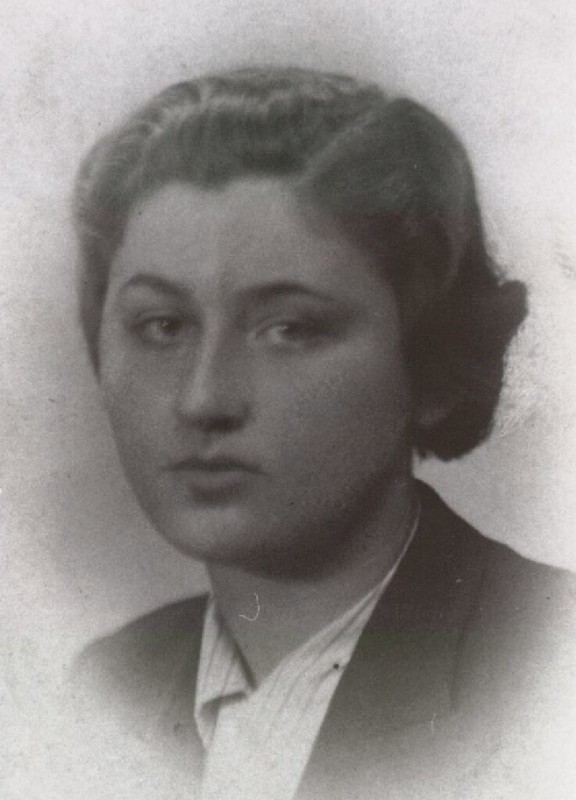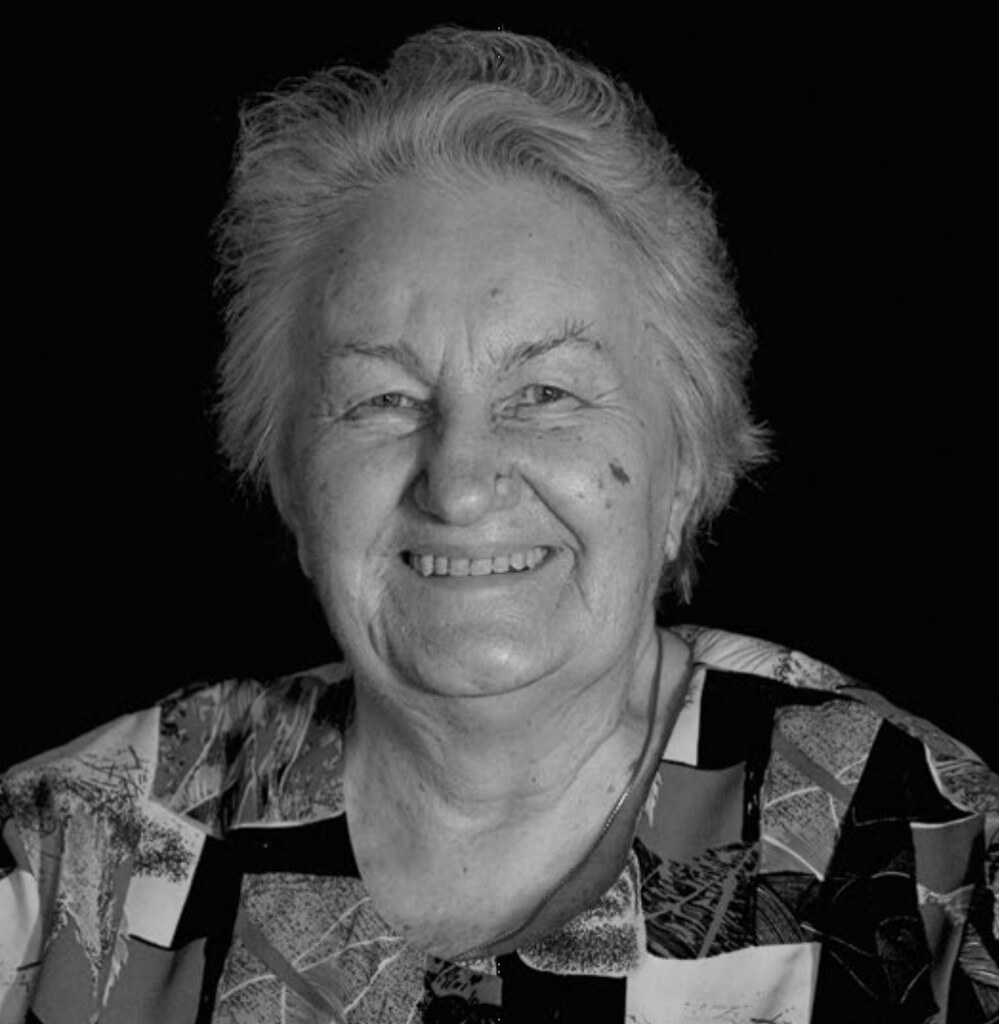The life of Maria Nowak, a Polish Catholic who risked her life to save a Jewish girl
A few hours ago I learned of the death of Maria Nowak-Bożek, one of the last survivors of the people considered "Righteous Among the Nations".
Two young Polish friends from Kraków: a Catholic and a Jewish
 Maria Franciszka Bożek (on the right, in a photo from her youth) was born in Kraków on January 22, 1920, into a Catholic family. Her father was a railroad man, which is why she and her family lived in a railroad housing block on Wielicka Street. In high school, Maria studied in a class that embodied the religious tolerance that Poland represented for centuries: there were 20 Catholic girls, 10 Jewish and 2 Protestant, but most importantly, they all considered themselves Polish. Maria's best friend was named Helena Goldstein and she was Jewish.
Maria Franciszka Bożek (on the right, in a photo from her youth) was born in Kraków on January 22, 1920, into a Catholic family. Her father was a railroad man, which is why she and her family lived in a railroad housing block on Wielicka Street. In high school, Maria studied in a class that embodied the religious tolerance that Poland represented for centuries: there were 20 Catholic girls, 10 Jewish and 2 Protestant, but most importantly, they all considered themselves Polish. Maria's best friend was named Helena Goldstein and she was Jewish.
In 1938, when they both graduated, Maria began studying mathematics at the Jagiellonian University in Kraków, while Helena began her studies at the Higher School of Economics. The studies of both were interrupted in September 1939 by the German-Soviet invasion of Poland. During the war, Maria started working in the textile industry.
The German-Soviet invasion of 1939 and the Kraków Ghetto
The Germans sent Helena and her family to the Kraków Ghetto, established in March 1941. The ghetto did not separate the friends. Maria helped Helena and her family by bringing them food and medicine, and also by passing on the information that reached her about the crowded trains of people, treated like cattle, leaving for an unknown destination, returning empty. Helena's father was sent on the first train from the ghetto to the Bełżec death camp.

In October 1942, Helena's mother was placed on a list to be deported from the ghetto. Despite attempts to hide, she was eventually captured and sent to Bełżec along with Helena's brother. They would never return: both were killed in that death camp, just like their father. Helena was alone.
Helena's escape with the help of her friend Maria
 Upon learning of her friend's tragedy, Maria decided to do something that would put her own life at risk: help Helena escape the ghetto. She bought a blank identity card, in which she put her personal information along with a photograph of Helena (you can see next to these lines an image of the young Jewish woman). Additionally, she accompanied the document with a copy of her own baptism certificate and a copy of her high school diploma.
Upon learning of her friend's tragedy, Maria decided to do something that would put her own life at risk: help Helena escape the ghetto. She bought a blank identity card, in which she put her personal information along with a photograph of Helena (you can see next to these lines an image of the young Jewish woman). Additionally, she accompanied the document with a copy of her own baptism certificate and a copy of her high school diploma.
Taking advantage of the fact that Helena had been authorized to work outside the ghetto, on Copernicus Street, one day Maria approached her, took off the bracelet with the Star of David that identified her as a Jew, and put a fur collar on her coat to make it less conspicuous (in December 1941 the German authorities had prohibited Jews from owning fur clothing).
Maria took Helena to a hiding place with a friend of the Catholic girl, where she was hidden for a few days. Shortly after, a friend of both, Zofia Wolmuth-Wyszyńska, who had helped Maria organize the escape, went to find Helena to take her to Warsaw. Hiding her in the Bożek family home would have been very risky in case the young Jewess was recognized. In addition, had she been captured there, Maria's entire family would have been executed (it was the German practice with Poles sheltering Jews).
The Warsaw Uprising and the postwar period
Thanks to the documents that identified her as Maria Bożek, the daughter of a railwayman, in Warsaw Helena began to work at the central railway station, announcing the trains in Polish and German. In order not to arouse suspicions about her identity, every month Helena sent a letter to Maria, with the envelope addressed to her father, Antoni Bożek.
After the Warsaw Uprising of 1944, Helena was sent to do forced labor in Germany. At the end of the war, in 1945, she returned to Kraków. She and Maria remained good friends until Helena's death in 1986. Maria married, renamed Maria Nowak, and had a daughter, Krystyna.
Maria ended up studying Pharmacy, eventually obtaining a doctorate, and worked in several pharmacies in the city, including the pharmacy of Tadeusz Pankiewicz, a Catholic pharmacist who managed to keep his pharmacy open in the Kraków Ghetto during the war, helping to Jews to get medicine and also on the run to avoid deportation to Bełżec. Pankiewicz would end up losing her pharmacy during the communist dictatorship, which subjected her to great harassment. H was declared "Righteous Among the Nations" by Yad Vashem in 1983.
Maria was declared 'Righteous Among the Nations' in 1995
 For many years, Maria participated in the meetings organized by the Galicia Jewish Museum, located in the old Jewish district of Kraków. Like pharmacist Pankiewicz, Maria (on the right, in an elderly photo) was declared "Righteous Among the Nations" by Israel's Yad Vashem in 1995. In 2007 she was recognized with the Commander's Cross of the Order of Poland Restituta, and in 2020, on the occasion of his 100th birthday, he was awarded the Medal of the Centennial of Recovered Independence.
For many years, Maria participated in the meetings organized by the Galicia Jewish Museum, located in the old Jewish district of Kraków. Like pharmacist Pankiewicz, Maria (on the right, in an elderly photo) was declared "Righteous Among the Nations" by Israel's Yad Vashem in 1995. In 2007 she was recognized with the Commander's Cross of the Order of Poland Restituta, and in 2020, on the occasion of his 100th birthday, he was awarded the Medal of the Centennial of Recovered Independence.
On the occasion of his centenary he received visits from great personalities, such as the Polish Minister Wojciech Kolarski, the Prime Minister of Flanders Jan Jambom and the Archbishop of Krakow, Marek Jędraszewski. Maria was an angel and a living symbol of that heroic Poland that risked her life to save thousands of Jews.
She passed away two weeks after the death of her daughter Krystyna
Maria left for heaven on November 6, 2020. Sadly, her grandson, Paweł Nowak, buried his grandmother just two weeks after burying his mother, Krystyna. "She would always have the most beautiful smile on her face and a kind word to say," notes the author of From the Depths, adding: “As is the wish of the family, I ask that we all pray for Ms. Nowak, and pray that his family finds comfort and consolation in these difficult times ”.
Maria partió hacia el cielo el 6 de noviembre de 2020. Tristemente, su nieto, Paweł Nowak, enterró a su abuela sólo dos semanas después de dar sepultura a su madre, Krystyna. "Ella siempre tendría la sonrisa más hermosa en su rostro y una palabra amable que decir", señala el autor de From the Depths, y añade: "As is wishes of the family, I ask that we all pray for Mrs. Nowak, and pray that her family find solace and comfort in these difficult times".
Spoczywaj w pokoju. Cześć jej pamięci!
Rest in peace. Honor to her memory!

Bibliography:
- From the Depths, November 7, 2020.
- Nowak Franciszka (Bożek). The Righteous Among the Nations Database.
- Witnesses to Polish-Jewish History, by Galicia Jewish Museum.
- Belgian leader celebrates Holocaust rescuer’s 100th birthday, by Cnaan Liphshiz, in Jewish Telegraphic Agency.
- Nowak Maria, in Historia Pomocy.
|
Don't miss the news and content that interest you. Receive the free daily newsletter in your email: Click here to subscribe |
- Most read
- The Pegasus case and how it could end with Pedro Sánchez due to a decision by France
- A large collection of Volkswagen cars hidden in an abandoned mine in Switzerland
- The real reason for Sánchez's victimizing letter using his wife as an excuse
- Abascal: “We Spaniards have witnessed a crude, outrageous and victimist theater”
- US F-35A fighters flying with Polish F-16s over Poland at a time of great tension
- The ten oldest national flags in the world that are still in use today
- Theater play is confirmed: Pedro Sánchez does not resign and repeats his conspiracy theory

 ES
ES





Opina sobre esta entrada: